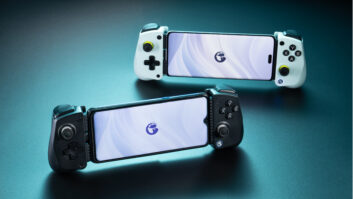PLAINFIELD, IND. — Ingram Micro Mobility is in a strong position to evaluate the changes in the mobile-device market. In 2014, the company expects to manage more than 15 million connected devices through its U.S. distribution and supply-chain services. Devices include tablets, fitness trackers and wearables, Bluetooth speakers, and other specialized mobile products.
The company “touches” one in three mobile devices in the U.S. through its array of services, including warehousing, logistics and supply-chain support, software loading, accounts receivable and credit management, order management, and end-user fulfillment services, not to mention its wireless-device repair, refurbishment and recycling services.
Because of the company’s broad involvement in the mobile-device market, TWICE questioned Bashar Nejdawi, president of Ingram Micro Mobility in North America, for his views on the state of the industry. Here’s what he had to say:
Smartphone Sales
TWICE: Are the carriers’ installment/ trade-up plans accelerating the smartphone-replacement cycle?
Bashar Nejdawi: Carriers’ installment/ trade-up plans are accelerating the smartphone-replacement cycle from its traditional 24 months to as soon as 12 to 18 months. This places added pressure on supply chains to ensure they’re working with agility to both push out and pull in devices at a much quicker rate.
Additionally, device-renting programs allow consumers to use and retire devices at a faster rate, and since users do not own these devices, they are not beholden to a contract.
Aside from carriers’ installment/ trade-up plans, there aren’t many factors responsible for or contributing to continued smartphone growth other than those that already exist for other products. A new type of functionality (think Apple Pay), a change in screen size, camera resolution or battery capability are examples of features manufacturers tout as a reason to get the newest model.
TWICE: Did the share of cellphone sales change in 2014 among carrier-direct, carrier-branded stores operated by independent retailers, and other CE channels?
Nejdawi: It’s difficult to determine whether the share of sales changed in 2014; however, we have certainly seen more retailers overall wanting to get into some portion of the mobility business.
TWICE: Will larger-screen cellphones remain the trend in 2015, or will there be a shift back to small?
Nejdawi: At this rate, phones over 5.2 inches are expected to make up half the market by 2015. It’s clear that large-format handset or phablet devices aren’t going away. Therefore, it is unlikely that we will see a shift back to small-screen cellphones in 2015.
TWICE: Will phablets entirely phase out smaller tablets and smaller notebooks?
Nejdawi: We must consider where a smartphone ends and a phablet/tablet begins. It is likely that the phablet will not impact the smaller notebook market – even those that exist with a removable keyboard – because they are not yet designed to work like a notebook. However, it was recently reported that Apple is planning to phase out the iPad Mini as sales of the small tablet are being cannibalized by Apple’s new large-screen smartphone. Even if this doesn’t prove to be the case, the fact that the option would even be plausible shows that larger-format handsets are having an impact.
We should continue to pay attention to how device manufacturers are defining the differences between their tablet and phablet devices to see if they are moving toward phasing out one of these categories.
Keeping Tabs On Tablets
TWICE: How are tablets faring in 2014 in units and dollars, and what’s the outlook for 2015?
Nejdawi: It’s difficult to determine the outlook for tablet sales, but according to Gartner, sales of tablets will reach 256 million units by 2014 – an increase of 23.9 percent from 2013. But this marks a slowdown for tablets when compared to the 68 percent increase in worldwide sales the tablet market experienced last year.
When comparing iOS and Android, Android’s lowcost tablets are helping it gain in terms of overall global market share, although Apple remains the single biggest individual vendor. Value-priced tablet brands continue to be introduced in the market; however, customers are looking at the combined value of price, features and performance.
TWICE: Will carriers’ promotion of cellularequipped tablets boost tablet sales or cannibalize Wi- Fi tablet sales?
Nejdawi: We haven’t seen a lot of promotion of cellular-equipped tablets by carriers, so it’s hard to determine how that will impact sales at this point. In many scenarios, the use case for the two models are markedly different, and a user targeted for a Wi-Fi tablet would not be the same type of user for a cellularconnected one. This should inherently limit the amount of cannibalization that occurs.
Wearables Wearing Thin?
TWICE: Will wearables fall flat this holiday or not? What should consumers look for when deciding whether to purchase one?
Nejdawi: It’s unlikely that wearables will fall flat this holiday. And, since most every company is coming out with a new wearable technology, there will be a wide variety to choose from. The launch of new smartwatches from a variety of mobile vendors, the expansion of wearable tracking devices such as Jawbone and Fitbit, and the increasing connectedness with smartphones will make this an easier message to market and sell to consumers.
Given the large number of new market entrants into this space, it’s almost certain that we will see a culling at some point in the future as certain products rise or fall, but the overall sales trend shows no sign of slowing down.
In terms of deciding to purchase a wearable or not, consumers should look at capabilities and how it matches with what they want. Consumers also should consider the platform and which one they’re most comfortable with.
TWICE: With new incumbents entering the wearables space constantly, what will set them apart?
Nejdawi: New incumbents can set themselves apart in terms of the data they collect, the ease of assessing that data, and a simple, user-friendly interface for using the device. For example, even though some wearables may gather the same data, there are differences between their apps. A user-friendly app is extremely important as it helps the user interpret the data.
Another differentiating factor will be how seamless these wearables interact with smartphones. The smartphone is increasingly becoming more of a central hub to manage and control a variety of external devices in addition to making calls and sending texts. Seeing more devices that tie into this “hub” hit retail shelves at attractive price points will be a featured attraction during the holiday season this year.
On the whole, the entrance of new market players in the space will be hugely challenging for some of the incumbents and will drive them to further innovate and defend their position as leaders in this space.
Online Trends
TWICE: What do Amazon’s plans to open a brickand- mortar store and California pop-ups, and the launch of Google Express, mean for same-day and click-and-collect shopping?
Nejdawi: Today, consumers are able to shop from the comfort of their own homes, compare prices and have access to a wide range of products at the click of a button. While this provides a huge opportunity for retailers to understand customers’ needs and wants, it also presents a downside – consumers now expect to have constant access to the order status and delivery and faster product arrival.
As we approach the holiday shopping season, Forrester Research expects U.S. consumers to spend $89 billion by Christmas – up about 13 percent from a year ago. In addition, online spending is expected to make up 14 percent of total retail spending over that period, and an expected 3.4 million Americans will try holiday shopping online for the first time this year.
With Amazon’s plans to open a brick-and-mortar store and the launch of Google Express, it’s likely that we’ll continue to see an increase in same-day and click-and-collect shopping. These announcements also serve as proof that online retailers are more aware and looking to serve and satisfy consumers.
TWICE: Will in-store mobile engagement become the new norm? How could it affect device sales?
Nejdawi: From a broad stance, in-store mobile engagement will likely become the new norm, such as making it easier to match Internet pricing with the products people scan in-store. However, it is difficult to determine whether the increase in in-store mobile engagement will directly affect device sales, as not many consumers would be influenced to go and buy a new device based on its in-store pricematching ability.













